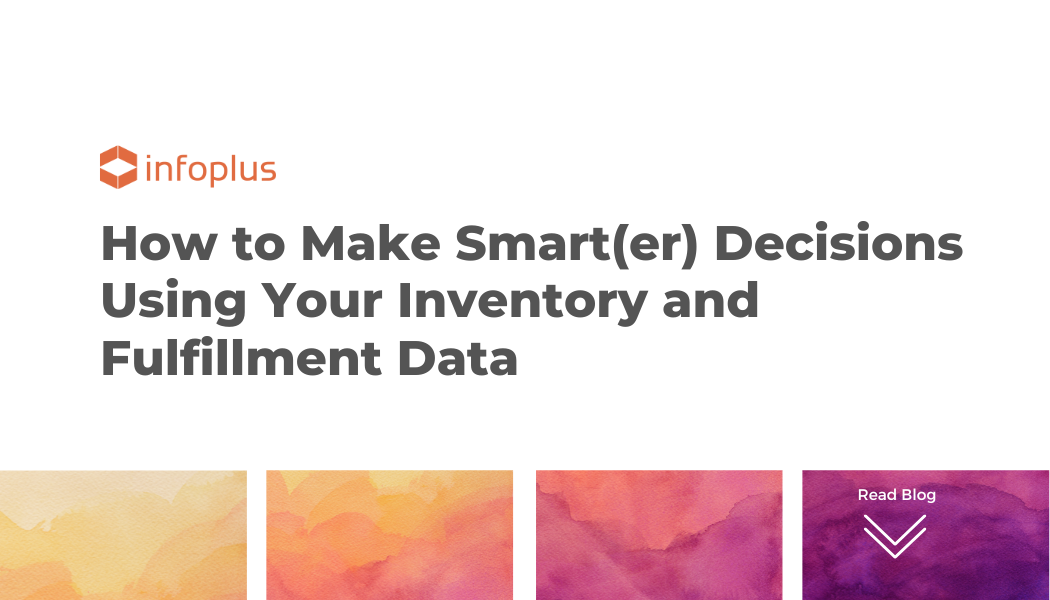How to Make Smart(er) Decisions Using Your Inventory and Fulfillment Data

The data kept in your warehousing and fulfillment system (if you have one) can be a treasure trove of insights into your business. The trick, of course, is knowing how to get that data out in a timely and useful way.
This is why it is so important to have a system that can generate custom reports automatically. Best-of-class inventory and fulfillment systems gather data in real time and then can push reports to you in any format you wish—for example, an email sent to your inbox. When reporting is automated in this way, you can make adjustments on the fly, creating a more nimble organization.
Nimbleness does little, however, without a clear vision. Automated reports can help here too. Having the right data presented in the right way can help with a number of management decisions, such as:
Adjusting Inventory Based on Demand
Many things can influence demand for a product: Seasonality, recent marketing and advertising promotions, and even the weather. When enough data are collected, patterns begin to emerge, predictions can be made, and inventory can be adjusted accordingly to meet demand.
In this blog, we’ve mentioned before the example of Walmart. Walmart stocks extra Strawberry Pop-Tarts in local stores when a hurricane is reported in the news. Sales of the breakfast item spike before hurricanes (the pattern) as people stock up on supplies, Pop-Tarts being a food that requires no refrigeration or heating and that kids are willing to eat.
Decreasing demand can be captured as well. For example, the sales trend of a particular product might be heading steadily downward, signalling that an item is losing popularity. This would be a sign to cancel the product line.
Such adjustments need real-time data to happen; if reports are coming at a frequency of every month, the data is too aggregated and the pattern gets lost.
Calculating Profit and Cost More Accurately
The true cost of an item in inventory is often more than the wholesale price of that item. One must also factor in shipping, packing and unpacking, storage, and insurance. Having the “true” cost of goods sold is the first step to getting accurate profitability data. Finding these costs allows for more accurate calculations; isolating them and doing something about them is another part of cost control.
Finding Areas of Savings and Efficiency
Once costs are understood, steps can be taken to improve efficiency and bring these costs down. Again, the right patterns need to be extracted from the data to make the appropriate adjustments. For example:
- When is more labor needed, and when can an oversupply of workers be sent home?
- Do more efficient ways of storing and stacking exist?
- Are there ways to reduce picking time for larger items?
- Would forward staging speed up the shipping process?
- Which vendors tend to short-ship, or ship damaged items?
- Which carriers make the most sense in which regions?
- When should shipping be by ground, and when by air?
In many of these cases, the savings are relatively modest—meaning that it would be difficult to justify an extensive study on any one of these. But if a report were generated automatically, immediate action could be taken to optimize the system and recoup many of these costs.
Substantiating Market Intelligence
Things like shipping records, including destination, quantities, and purchasing patterns, can provide extensive amounts of marketing intelligence. For example, one can answer questions such as:
- What regions of the country are generating the most orders?
- Which items are going to which cities and regions?
- Which items are frequently purchased together?
- Is there a seasonality to any items?
These answers can in turn inform business decisions and help substantiate other forms of marketing research.
Answering Those ‘Random’ Questions
Not all business decisions can be anticipated ahead of time. There is always the possibility that, in the course of planning, you will need the answer to a seemingly random question, like “Are people in New Jersey buying our products?” or “Did the latest recall squeeze our inventory, or was there a parallel drop-off in demand?” or “Can we offer free or reduced shipping as an incentive without hitting our bottom line?”
This is the reason that a good inventory management system should include the ability to create custom reports. One can never anticipate all questions ahead of time, but it should be possible to find the answers to those random questions when they pop up.
Is Your Inventory and Fulfillment Software Up to the Task?
Naturally, you must begin with inventory and fulfillment software that can generate, record, and access these kinds of data easily, if you want to make better decisions based on them.
For example, knowing the above, we created Infoplus so that it could easily and automatically generate these kinds of custom reports and then send them to the appropriate parties. Our hope was that, by automating many of these intelligence-gathering tasks, managers would be freed from a lot of mind-numbing work and better able to focus on making those decisions that lead to a higher ROI. (We have several examples of such reports; just reach out if you want to see a sample.)
Not having this kind of intelligence in your hands is like flying blind. And no business wants that.
.png?width=225&height=60&name=Logo%20(7).png)


